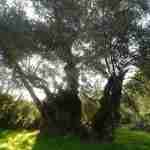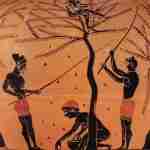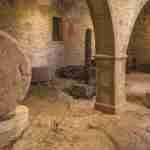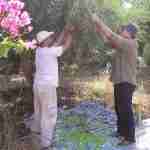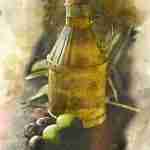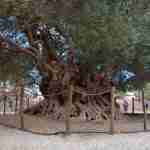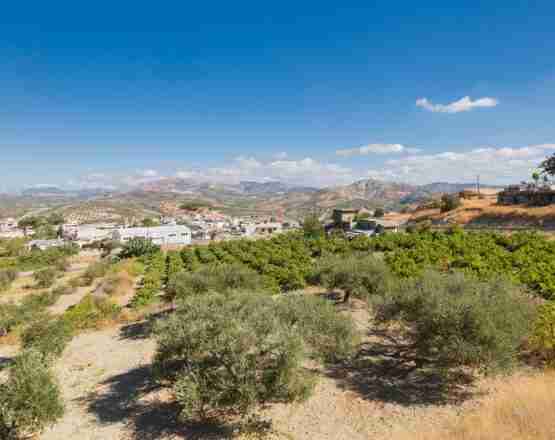Olive Tree
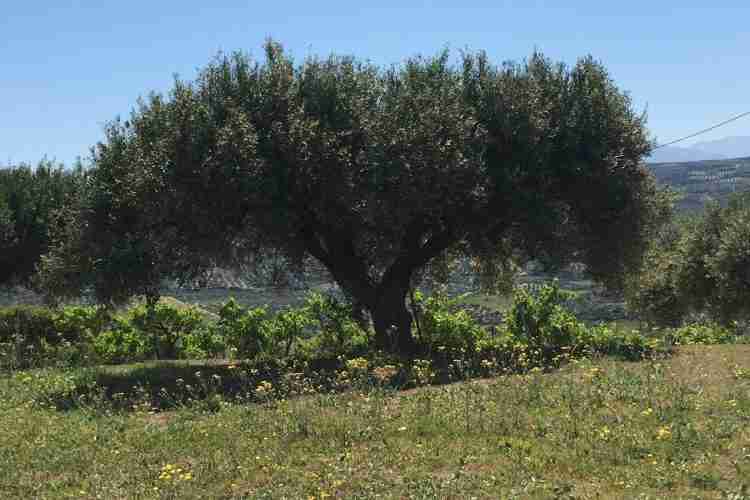
The olive tree for most is a symbol of peace as found in the Old Testament!
In fact this tree has been sacred in the Eastern Mediterranean much earlier.Very possibly Syria is where it was probably first cultivated.
Crete was the first area within Europe where this tree was cultivated and soon became a sacred tree as well.
Frescoes of olive trees are seen in Bronze Age Minoan Art of Crete,engraved on rings, seal stones as well as olives remnants in sites.
All the above occurred much earlier than Biblical times.
Through Crete the garden of Eden of the Greek Gods and myths the olive tree arrives to Athens.
This time associated with the Goddess Athena,here on just this moment we come to realize that the olive tree symbolises not peace in a abstract way,but Peace between man and God!
That’s why olive branches were used regularly to signal the end of conflict,as well as approval of Higher Power.
Mythology has it that a long long time ago a newly founded state wanted a patron God and name for it self.
2 Gods expressed an interest Poseidon the brother of Zeus who struck the sacred rock with his trident and water sprung at once, he also offered the control of all horses.
Poseidon was a very impulsive God untamed like the Wild wild sea his element.
The Goddess Athena, wise cautious (the first born child of Zeus born out of his head)after taking her time planted the first olive tree and the gifts it could bring…something the people would come to realise in time as wisdom and strategy was bestowed upon them.
I think we all know the God that was chosen,we all have marvelled the Parthenon on the sacred rock of the Acropolis in Athens.
This resilient shallow rooted tree today is embedded in the cultural,historical and culinary heritage of Greece!
For olive wreaths are given still today to victorious athletes, olive oil is used in the Greek Orthodox Baptism today and olive branches together with palm branches are used on Palm Sunday to decorate entrances of Greek Orthodox Churches.
The Green Gold, that is how in Crete we refer to this blessing that thrives on this full of rocks and mountains island.
So let’s discover some of these living monuments of Crete,silent witnesses of the history of our island and the Mediterranean people’s.
Our first visit can take us to Eastern Crete Azorias Kavousi,
This olive tree is a natural monument,the oldest olive tree in the world,grafted on a rootstock of a wild olive tree…here we have the oldest sample of grafting in the world.
Vatolakkos olive tree next.
Aerinos olive tree with a lovely tree trunk with embedded stones.
Fourkolia olive tree near Piskokefalo
Genna olive tree also grafted from wild olive tree
Gortyna olive tree, the Gorys the Roman capital of Crete, here we can also see part of a marble column embraced by the olive tree.
Grambela olive tree near Kandanos also grafted on a wild olive tree
Saint George Vardaliana at Arisanaki near Kandanos
Gre (old lady)Ele olive tree
Also grafted on a wild olive tree near Eleftherna
Amari olive tree at Monastiraki
Mathena olive tree with its trunk forming a cave
Parnassos olive tree also drafted on an wild olive tree
Palea Roumata olive tree in Chania, this olive tree was used as a hiding place for rifles during WW2
Samonas olive tree at Lakkos near the Minoan settlement of Koydra
Kamilari olive tree
Paliamas olive tree this tree goes as far back as the Early Iron Age of Crete
The olive tree of Kamara Deliana
Finally
in Western Crete Chania Ano Vouves one of the most popular olive trees .

